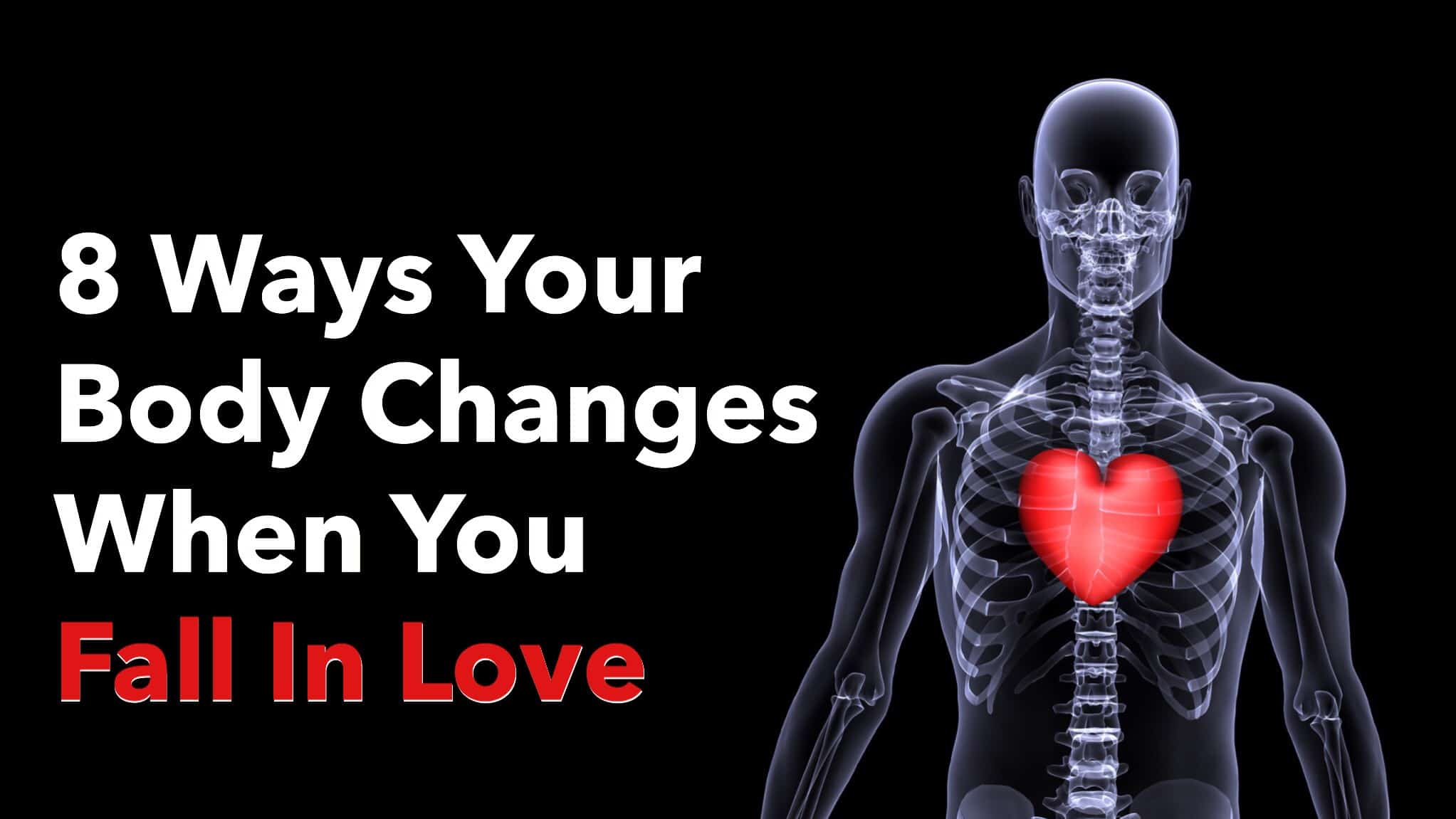During our first childhood “crush,” we all experienced butterflies in the stomach, nervousness, and a racing heartbeat. We were infatuated and couldn’t take our eyes off of the object of our budding love.
Does anyone else remember anxiously awaiting the recess bell so we could see them on the playground? Or hoping that the teacher assigned you a desk right next to theirs? Indeed, chemical reactions were taking place in our young brain and body, giving us our first (albeit immature) taste of love.
Truly, a fascinating chain of chemical reactions occurs when we’re head over heels. From the relationship’s beginning to first climbing under the sheets, and finally saying those “three words,” here’s what goes on as your body falls in love.
What happens to your body when you fall in love
“Nothing is sweeter than love; all other bliss comes second. And compared to it, even honest it too hotter to hold in my mouth.” – Nossis
#1 You feel “addicted” when you fall in love
Falling in love, and its effects on the body, are strikingly similar to being addicted to drugs. Chemicals that cause a euphoric high – adrenaline, dopamine, oxytocin, and vasopressin, are all released at some point during intimacy. Dopamine is the brain’s pleasure chemical and is what causes feelings of elation and energy around our loved one.
Helen E. Fisher, a biological anthropologist at Rutgers University, states “Romantic love is an addiction. It’s a very powerfully wonderful addiction when things are going well.” Functional magnetic resonance imaging (fMRI) scans of the brain in love strongly resemble those experiencing a high.
Lovers are also like drugs, in the sense that the more time you spend with them, the more hooked you become.
#2 Love lowers your inhibitions (“feeling drunk”)
Just as having one too many cocktails lowers anxiety, fear, and inhibition – and makes you more boastful and confident – the “love drug” oxytocin produces the same effect. Researchers at the University of Birmingham observed the effects of alcohol and oxytocin on the brain, and though they impact different parts of the brain, the effects are very similar.
#3 Your pupils dilate when you experience love
When you feel strongly attracted to someone, no matter the time or place, a reaction occurs within the brain’s sympathetic branch, the SNS. This stimulation causes the pupils of the eyes to dilate (become wider).
Try this out on your date, boyfriend, girlfriend, or spouse – it’s fun stuff!
#4 You may experience a flushed face, sweaty palms, or a racing heart
Becoming anxious (sometimes, very anxious) before an important event (e.g. a big date, wedding day) is more than a nervous “twitch.” An influx of the brain chemicals adrenaline and norepinephrine can produce physical sensations, such as craving and desire. Also, your brain will focus intently on the person of affection.
#5 Your stomach may act up
When you really begin to like (perhaps love) someone else, the brain may release the stress hormone cortisol. Cortisol can cause the stomach’s blood vessels to constrict, perhaps leading to feelings of nausea and lack of appetite. This physiological response may explain why many couples don’t eat much on their wedding day.
#6 Love can help you experience “withdrawal symptoms”
Corticoliberin is a peptide hormone released during a stress response. Also known as the “corticotrophin-releasing factor,” separation from our loved one can exacerbate any stress response. The “withdrawal symptoms” of anxiety and depression are similar to those of an addict weaning off a drug.
#7 Pheromones are triggered – and sensed
Pheromones are “smell chemicals” that animals, including humans, excrete and sense. Biologically, this changes the behavior of another animal. In more humanistic, simple terms, we have attuned to our partner’s pheromones, which increases sexual desire.
Dr. Fisher states, “Once you fall for someone, their smell can be a powerful thing. Women will wear their boyfriend’s T-shirts, and throughout tales in history, men have held on to their lover’s handkerchief.”
#8 Our brain changes (and “lights up”)
Fisher’s first groundbreaking study was in 2005 when she analyzed the brain images of individuals in love. A total of 2,500 brain scans were taken. Each participant was shown a picture of their “special someone” and then a picture of an acquaintance. The images revealed drastic differences.
The first noticeable effect was the flood of “feel-good” dopamine chemicals in certain regions of the brain. Other noticeable differences involved two other areas of the brain: the caudate nucleus and ventral tegmental area. The former is strongly linked with reward detection, and the latter is associated with “pleasure, focused attention, and the motivation to pursue and acquire rewards.”



















